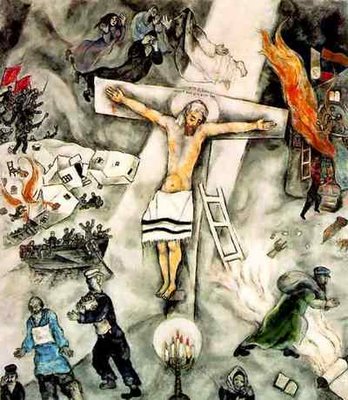In the year 30AD, the day of Passover, Nisan 14, was the fourth day of the week, a Wednesday. (4) What is traditionally know as Palm Sunday, was actually Palm Sabbath, that year, and it fell on Nisan 10. Four days after the Lamb was taken and examined in the Temple, He was labeled as the Yahweh’s Lamb, with the title The King of the Jews, and mocked as He hung on the cross. The number four has to do with authority. (5) Yeshua gave up His authority and died on the fourth day, at the time the Passover lambs were slaughtered in the temple. The background music of the Hallel (Psalm 113-118) was sung by the Levites as Yeshua took His last breath. (6)
He was taken down from the tree and buried in the tomb before the annual Sabbath of Unleavened Bread, Nisan 15, began. In Hebraic reckoning, days begin with nightfall, the evening prior. Which means Yeshua was in the tomb at the end of the 14th of Nisan just as the day of Nisan 15, began. He remained there for three entire nights, and three entire days. At the end of the three nights and days, He came forth from the grave as the eve of the Biblical feast of First Fruits, began.
During this same three days, centuries prior, Queen Esther also had her people, die to themselves in fasting and prayer, for the sake their deliverance, during these same three days. Do you think there is a coincidence in the timing? Not with Yahweh!
At the end of the three day fast, Esther invites King Ahasuerus and Haman to a feast. This first banquet, at the beginning of the Biblical holiday of First Fruits is the initiation of the exposure of the Adversay. The queen is obviously deeply distressed and the king is willing to give her up to half of his kingdom, to give her peace. When asked, Esther declines to tell the king what her source of trouble is and instead, invites Haman and the King to another banquet the following night.
In the night between these feasts or banquets, the King’s sleep is shaken and he is up through the wee hours, reading the chronicles of his life. Perhaps he is searching for something to give him a clue to what has disturbed his Queen? In reading about a past assassination attempt, the king realizes that he omitted honoring the man who once saved his life, Mordecai, the Jew.
Haman also has a troubled night, because he has no patience to wait eleven months for the death of Mordecai. He has to have it now! How ironic, both the King and Haman can’t sleep and both are focused on Mordecai, the Jew.
Another irony, on the 18th day of Nisan, the King decides to honor the Jew, the one who saved his life. To twist the irony even deeper, the honoring is done at the advice of prideful Haman, who thought more highly of himself then he ought to. Mordecai the Jew, is then exalted with royal robes, and paraded on one of the King’s horses, throughout the whole city of Shushan with the words, “Thus shall it be done to the man whom the king delights to honor” (Esther 6:9). This lifting up of Mordecai the Jew, was the exact opposite of the intention of Haman’s vile heart. Haman intended to lift Mordecai up on the gallows of humiliation, and God intended to see him lifted up in kingly honor. The full fury of Haman’s wrath must have reached its peak that First Fruits of Nisan 18, when he was suddenly escorted into the king’s presence for his last supper with Esther. During this feast, the Queen, whose identity and ancestry was hidden until this precise time, exposes the Enemy and delivers his head to the very same gallows, which Haman had erected to kill Mordecai. The weapon he had designed to destroy the Jew, came back upon his own head.
For the saints, the picture is clear. The King will exalt to honor the Jew, who is willing to die (“if I perish, I perish”) for the sake of his (or her) people and will lead them in triumph over every Enemy. Those who plot against the work of Yahweh will be exposed, for who they are, just as Satan was exposed at the resurrection. Yeshua, the Bread of Life, came forth from the ground as the First Fruits of the resurrection. We speak this truth every Sabbath eve with the words, “Blessed are you Adonai/Yahweh, King of the universe, who brings forth Bread from the earth.” The 18th day of Nisan confounded the work of the Enemy and will always be remembered as the victory for the saints. Yeshua’s death on the cross, erased the decree of destruction for us, and made a public spectacle of Satan. What the Adversary meant for harm on Nisan 13, God triumphed over on Nisan 18. Yeshua gave up His authority on earth and died on the fourth day of the week. Four days later, with His ascension on First Fruits, He took back that authority, and ended Satan’s dominion over mankind.
“For in Him [Messiah Yeshua] dwells all the fullness of the Godhead bodily and ye are complete in Him, which is the head of all principality and power: In whom also ye are circumcised…Buried with Him in baptism, wherein also ye are risen with Him through the faith… And you, being dead in your sins…hath He quickened together with Him, having forgiven you all trespasses; Blotting out the handwriting of ordinances that was against us…nailing it to His cross; and having spoiled principalities and powers, He made a show of them openly, triumphing over them in it. Let no man therefore judge you… in respect of a holy day, or of the new moon, or of the sabbath days: Which are a shadow of things to come…” Col. 2:9-17).
The saints are one people, with one hope, and one faith in the Most High God. Let no man deceive you or judge you according to the Sabbaths you choose to honor. Yeshua is our Passover and the First Fruits of the resurrection. The Biblical feasts are the Sabbaths set aside to honor the awesome work of our God. The Book of Esther teaches the Torah and the Testimony of Yeshua in shadows. The New Covenant Scriptures openly display the Torah of Yeshua and how He, as Messiah, fulfills the commandments of God in the Feasts of the LORD.
In the Book of Revelation there is only one group of people that will stir up the wrath of the Enemy to the vexation level of Haman. It is the saints that know who they are and who obey the voice of their God. “…And the dragon was wroth with the woman, and went to make war with the remnant of her seed, which keep the commandments of God, and have the testimony of Jesus Christ [Yeshua Messiah]” (Rev. 12:17). This united group of people will be a powerful witness of the authority of the Kingdom of God over all the forces of darkness. They will shine as the people that know their God and they shall do exploits against the Pharoahs and Hamans of this world.
In conclusion, the covenant community of faith is the one, which keeps both the commandments of God, the Torah, and the Testimony of Yeshua. “To the law and to the testimony: if they speak not according to this word, it is because there is no light in them” (Isaiah 8:20).
May all those who read this, have the courage and patience of the saints, to stand as lights in this dark world, and overcome all the work of the Enemy. Yeshua is the Lamb, Who overcame and He leads His people in His victory. For He is the “Lord of lords and the King of kings; and they that are with Him are called, and chosen, and faithful” (Rev. 17:14). “And they overcame him [the Accuser of the brethren] by the blood of the Lamb, and by the word of their testimony; and they loved not their lives unto the death” (Rev. 12:11). Many are called, few are chosen, and even fewer are faithful until death.
“All authority, every victory is Yours,
Saviour, Worthy of honor and glory
Worthy of all our praise, You Overcame
[Yeshua] awesome in power forever, You Overcame…
We will overcome, by the blood of the Lamb
And the word of our testimony…” (7)
(1) The Creation Gospel, Book Two, The Seven Abominations of the Wicked Lamp by Dr. Hollisa Alewine.
(2) Beth Moore, Esther – It’s Tough Being a Woman, page73, Lifeway Press, 2008)
(3) Beth Moore, Esther – It’s Tough Being a Woman, page74, Lifeway Press, 2008)
(4) www.rosetta calendar.com
(5) The Creation Gospel, Book One, The Seven Spirits of God, One Holy Spirit by Dr. Hollisa Alewine
(6) The Feasts of Adonai, Why Christians Should Look at the Biblical Feasts by Valerie Moody, page 33.
(7) Lyrics to Jeremy Camp song titled Overcome.
1 Comment
Trackbacks/Pingbacks
- Purim and the Passover Deliverance (Part 1) | janediffenderfer.com - […] https://janediffenderfer.wordpress.com/2014/03/12/purim-and-the-passover-deliverance-part-2/ […]


You are an awesome teacher. Thank you so much for these wonderful truths! I shared your article with all my contacts. God bless you!